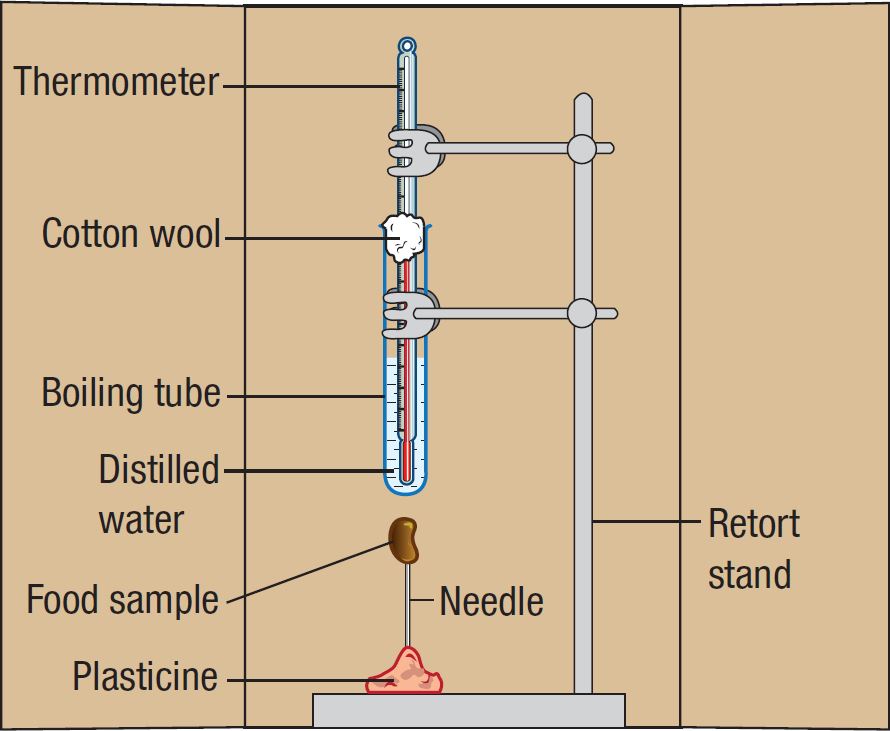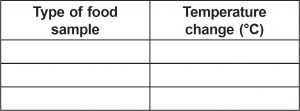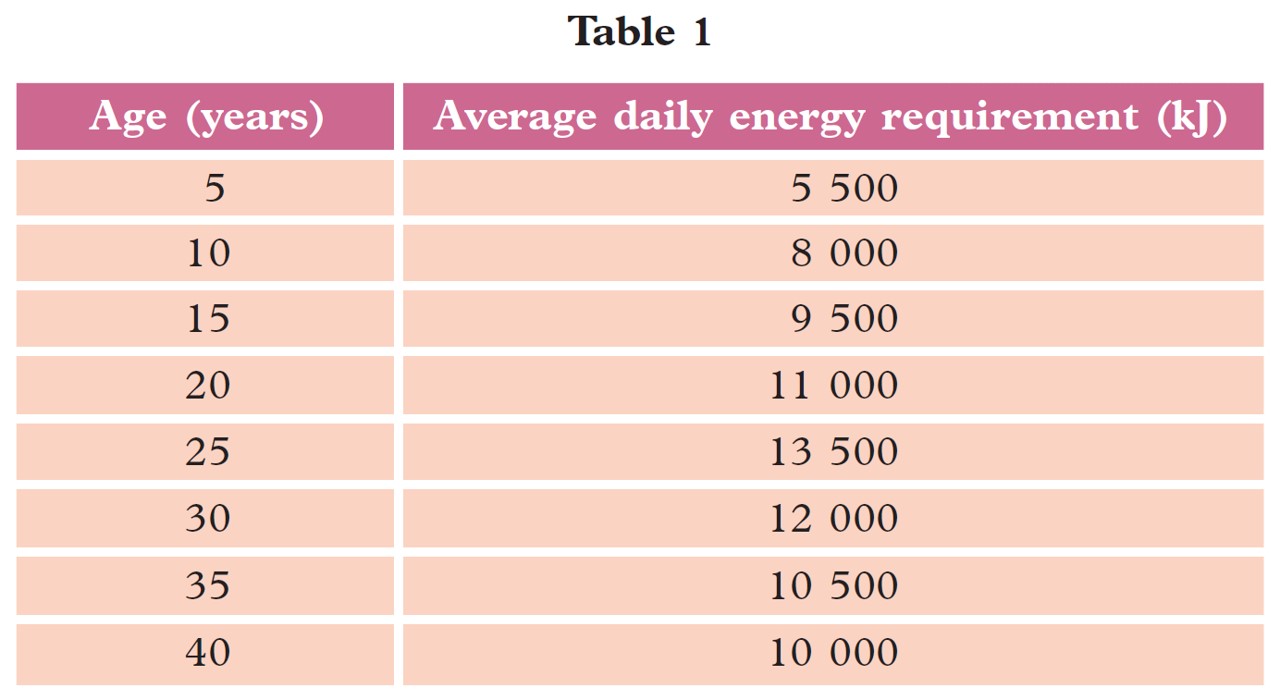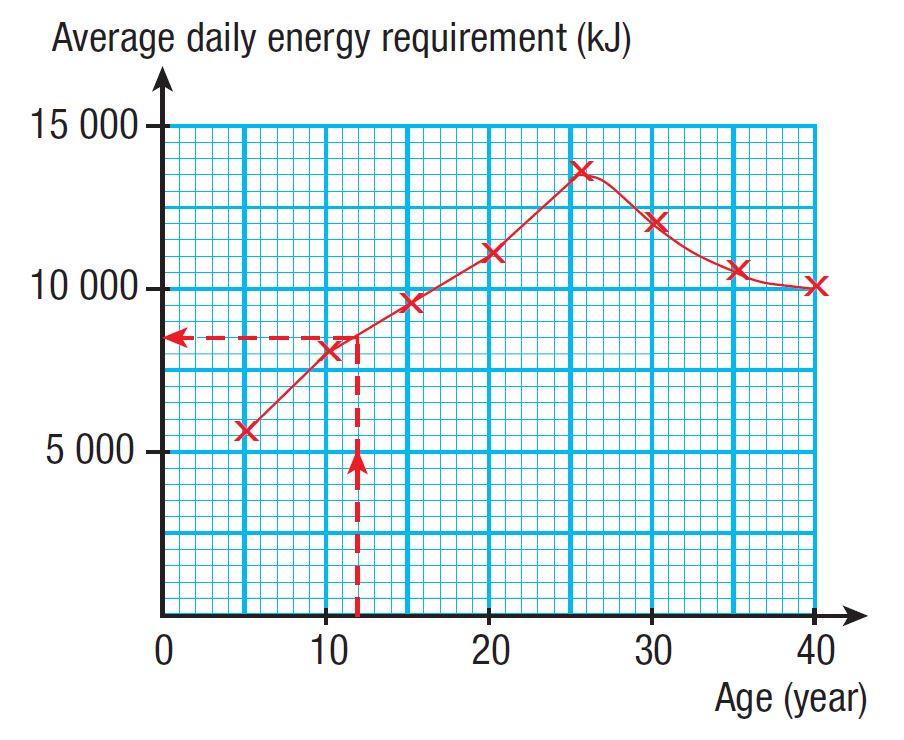Study the following situation.
The diet of Eskimos normally contains meat rich in fat such as whale meat. The consumption of whale meat can warm the body.
(a) Suggest one hypothesis to investigate the above situation.
(b) Based on the situation given, plan and describe an experiment to compare the calorific values of fat and another type of food such as carbohydrate and protein using a calorimeter.
Your description should contain the following aspects:
(i) aim of experiment
(ii) identification of variables
(iii) list of materials and apparatus
(iv) procedure or method
(v) tabulation of data
Answer:
(a) Consumption of whale meat can warm the body compared to other food.
(b)(i)
Aim of experiment
To measure and compare the calorific values of fat, carbohydrate and protein
(b)(ii)
Identification of variables
• Manipulated variable: Type of food sample
• Responding variable: Rise in temperature
• Constant variable: Mass of water in calorimeter
(b)(iii)
List of materials and apparatus
• Materials: Fat, carbohydrate and protein samples weighing 1 g each, distilled water and cotton wool
• Apparatus: Retort stand, boiling tube, thermometer, shield, plasticine and needle
(b)(iv)
Procedure or method
1. Prepare the apparatus set-up shown in the figure below.

2. Record in a table the type of food sample and its mass, mass of water in the calorimeter, and initial temperature, T1 on the thermometer.
3. Use a lighter to light up the food sample.
4. Observe and record the final temperature, T2, after the food sample has completely burned.
(b)(v)
Tabulation of data
Table 1 shows the average daily energy requirements of females aged between 5 and 40 years old.

(a) Using the data in Table 1, draw a graph of average daily energy requirement against age.
(b) Based on the graph in question 2(a), state the average daily energy requirement for a 12-year-old individual.
(c) What is the relationship between average daily energy requirement and age between 30 and 40 years?
Answer:
(a)

(b)
(c) Average daily energy requirement decreases with age